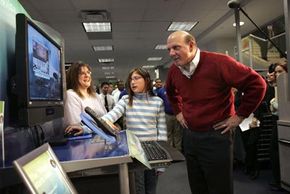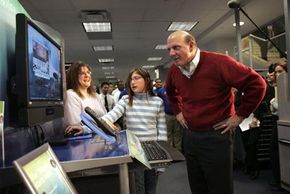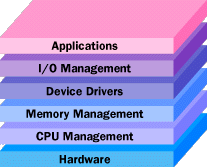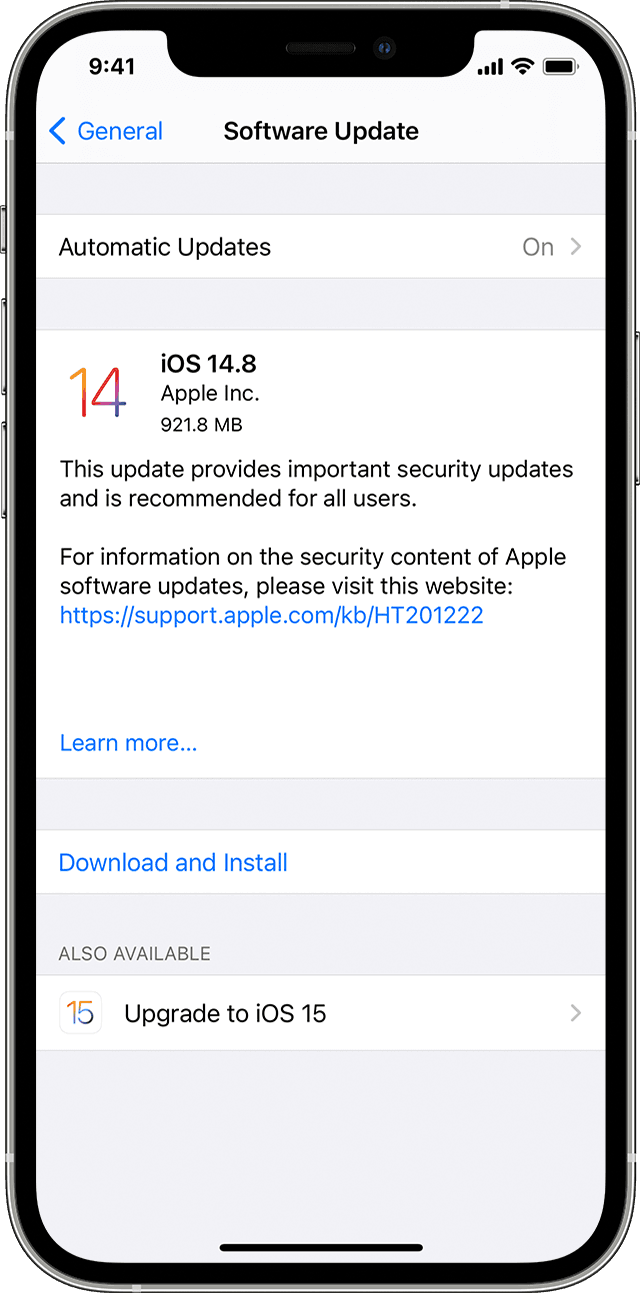
When you turn on your computer, it’s nice to think that you’re in control. There’s the trusty computer mouse, which you can move anywhere on the screen, summoning up your music library or Internet browser at the slightest whim. Although it’s easy to feel like a director in front of your desktop or laptop, there’s a lot going on inside, and the real man behind the curtain handling the necessary tasks is the operating system.
Most desktop or laptop PCs come pre-loaded with Microsoft Windows. Macintosh computers come pre-loaded with Mac OS X. Many corporate servers use the Linux or UNIX operating systems. The operating system (OS) is the first thing loaded onto the computer — without the operating system, a computer is useless.
More recently, operating systems have started to pop up in smaller computers as well. If you like to tinker with electronic devices, you’re probably pleased that operating systems can now be found on many of the devices we use every day, from cell phones to wireless access points. The computers used in these little devices have gotten so powerful that they can now actually run an operating system and applications. The computer in a typical modern cell phone is now more powerful than a desktop computer from 20 years ago, so this progression makes sense and is a natural development.
The purpose of an operating system is to organize and control hardware and software so that the device it lives in behaves in a flexible but predictable way. In this article, we’ll tell you what a piece of software must do to be called an operating system, show you how the operating system in your desktop computer works and give you some examples of how to take control of the other operating systems around you.
What is an Operating System?
Not all computers have operating systems. The computer that controls the microwave oven in your kitchen, for example, doesn’t need an operating system. It has one set of tasks to perform, very straightforward input to expect (a numbered keypad and a few pre-set buttons) and simple, never-changing hardware to control. For a computer like this, an operating system would be unnecessary baggage, driving up the development and manufacturing costs significantly and adding complexity where none is required. Instead, the computer in a microwave oven simply runs a single hard-wired program all the time.
For other devices, an operating system creates the ability to:
- serve a variety of purposes
- interact with users in more complicated ways
- keep up with needs that change over time
All desktop computers have operating systems. The most common are the Windows family of operating systems developed by Microsoft, the Macintosh operating systems developed by Apple and the UNIX family of operating systems (which have been developed by a whole history of individuals, corporations and collaborators). There are hundreds of other operating systems available for special-purpose applications, including specializations for mainframes, robotics, manufacturing, real-time control systems and so on.
In any device that has an operating system, there’s usually a way to make changes to how the device works. This is far from a happy accident; one of the reasons operating systems are made out of portable code rather than permanent physical circuits is so that they can be changed or modified without having to scrap the whole device.
For a desktop computer user, this means you can add a new security update, system patch, new application or even an entirely new operating system rather than junk your computer and start again with a new one when you need to make a change. As long as you understand how an operating system works and how to get at it, in many cases you can change some of the ways it behaves. The same thing goes for your phone, too.
Regardless of what device an operating system runs, what exactly can it do?
Operating System Functions
At the simplest level, an operating system does two things:
- It manages the hardware and software resources of the system. In a desktop computer, these resources include such things as the processor, memory, disk space and more (On a cell phone, they include the keypad, the screen, the address book, the phone dialer, the battery and the network connection).
- It provides a stable, consistent way for applications to deal with the hardware without having to know all the details of the hardware.
The first task, managing the hardware and software resources, is very important, as various programs and input methods compete for the attention of the central processing unit (CPU) and demand memory, storage and input/output (I/O) bandwidth for their own purposes. In this capacity, the operating system plays the role of the good parent, making sure that each application gets the necessary resources while playing nicely with all the other applications, as well as husbanding the limited capacity of the system to the greatest good of all the users and applications.
The second task, providing a consistent application interface, is especially important if there is to be more than one of a particular type of computer using the operating system, or if the hardware making up the computer is ever open to change. A consistent application program interface (API) allows a software developer to write an application on one computer and have a high level of confidence that it will run on another computer of the same type, even if the amount of memory or the quantity of storage is different on the two machines.
Even if a particular computer is unique, an operating system can ensure that applications continue to run when hardware upgrades and updates occur. This is because the operating system — not the application — is charged with managing the hardware and the distribution of its resources. One of the challenges facing developers is keeping their operating systems flexible enough to run hardware from the thousands of vendors manufacturing computer equipment. Today’s systems can accommodate thousands of different printers, disk drives and special peripherals in any possible combination.
[“source=computer.howstuffworks”]







